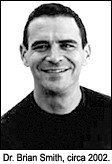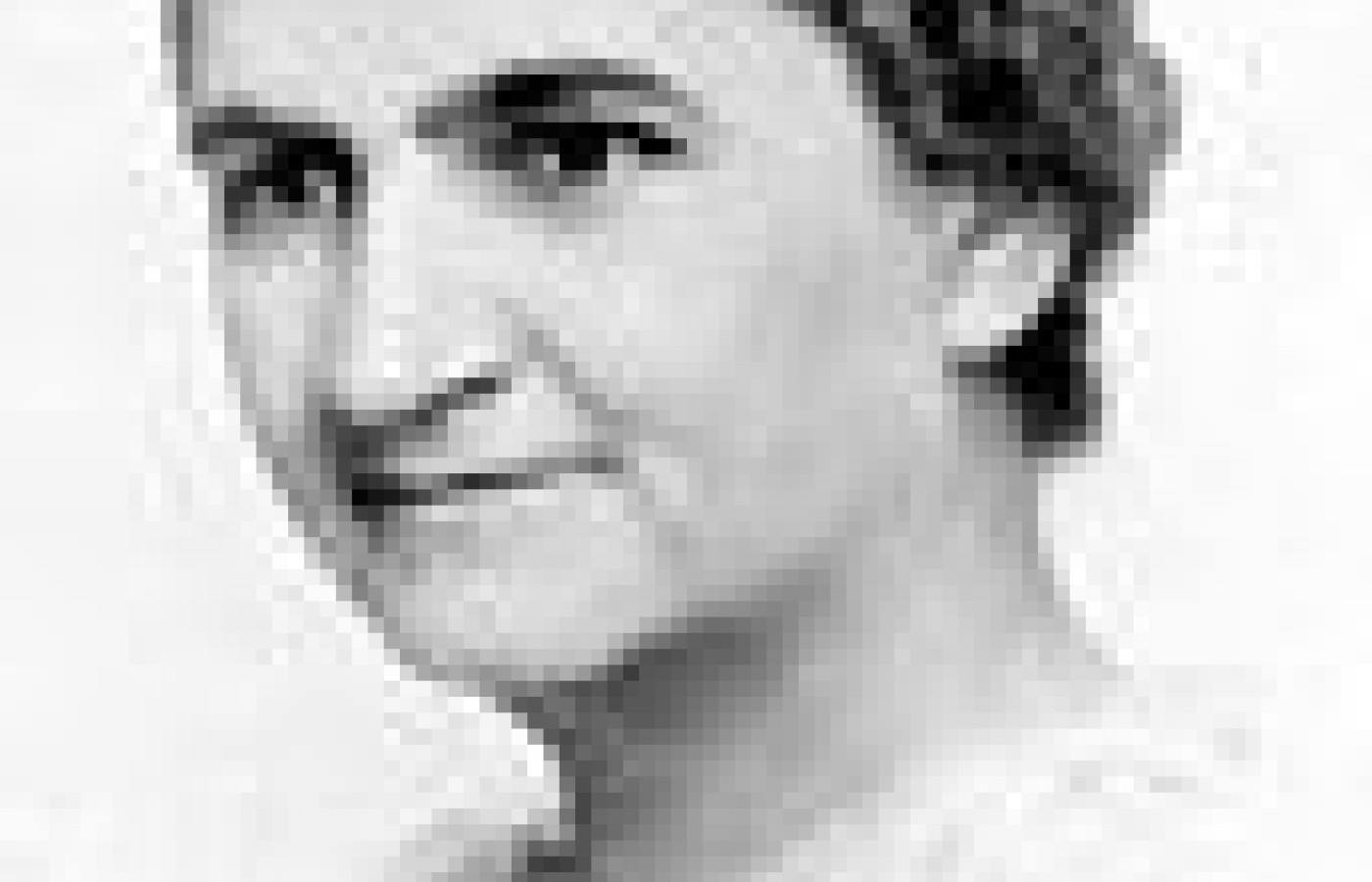Many relevant diagnostic signs are not performed deliberately by the examiner or by the patient at the examiner’s direction. They are observed as the patient reacts to their condition. Fortin’s finger sign, Minor’s sign, and Vanzetti’s sign are three examples of this principle.
On Historical Research, Writing and Preservation
The summer 2005 issue of Chiropractic History, the journal published by the Association for the History of Chiropractic (AHC), included a masterpiece of historical investigation. Hats off to Brian A. Smith, DC, for his in-depth report, "Charles Augustus Cale, N.D., D.C., Ph.C., M.C., 1870-1938: the Educator from Indiana."1 This is sleuthing and storytelling at its most intense, and offers the profession a revealing glimpse of the founder of one of its major institutions, the Los Angeles College of Chiropractic (LACC; now Southern California University of Health Sciences), and some of the many schools that merged with this college over the years. Smith's paper is remarkable for the breadth of archival sources tapped and resources assembled in order to map out the life and career of this largely forgotten but nonetheless significant chiropractic pioneer. Dr. Smith's work demonstrates dogged pursuit of facts and the perspicacity to put them together into a meaningful whole. Well done! At its recent Conference on Chiropractic History, the AHC recognized Brian's achievement with the award for best history paper.

There are, however, many other forms of research and contributions to the historical database. The same issue of Chiropractic History in which Dr. Smith's paper appeared included a first-person retrospective by Orval L. Hidde, DC, JD, well-known to the profession as one of two individuals (along with George Haynes, DC, MS) most responsible for securing the Council on Chiropractic Education's recognition by the U.S. Office of Education in 1974.2 Dr. Hidde relates events connected with his 20 years of service with the CCE (1961-1980); the value of his report3 rests not only in the unique perspective he offers, but also upon the meticulous records he maintained over the years. No one else could have provided this sort of view of one of the major turning points in the history of the profession.

This particular issue of Chiropractic History also offered a farewell4 to one of the profession's most valuable supporters, Professor Walter Wardwell, PhD. A long-serving member of the AHC's board of directors and the 1993 recipient of the Association's Lee-Homewood Chiropractic Heritage Award, Walt had been an observer of the chiropractic profession at least since his days in graduate school. His 1951 doctoral dissertation at Harvard University was reportedly the first sociological treatise on the chiropractic profession, and he continued to contribute his understanding of the history of struggles of chiropractors during the next 50 years. Perhaps his single most important contribution to an understanding of the chiropractic saga was his 1992 manuscript, Chiropractic: History & Evolution of a New Profession.5 In this work, Dr. Wardwell struck a delightful balance between depth and breadth of coverage; this volume is the best textbook (and still the only one of its type) for teaching the history of the profession.

It is surely the case that we today stand on (and hopefully build upon) the shoulders of the greats who went before us. Yet we need not be intimidated by the caliber of their work. We should instead be inspired by it to contribute, each in our own way, to expand our knowledge and understanding. To this end, it may be helpful to recognize the variety of forms of historical input.
Writing the history of chiropractic (or of any other subject, for that matter) may take either or both of two forms: storytelling and analysis. Although many contributions combine both elements, one does encounter the historical writer who proceeds on the assumption that the facts of some event are well-known by the audience, and with appropriate references to established source works, offers little or no new data. The value of such work lies in integration and interpretation. Like the hypothesis-testing of the scientific method, the analytic historical treatise marshals evidence for and against a particular way of looking at what has transpired. The result may be an intellectual gem that stimulates the imagination and opens new avenues of investigation, or a folly that misdirects, obfuscates or prompts strenuous rebuttal by readers. Both can be valuable, albeit in different ways.

Much of historical research and writing, however, involves efforts to capture and relate facts as best as they can be discerned. Storytelling, an art at least as old as the campfires of our pre-historic ancestors (i.e., those whose stories did not survive!), is an art common to all people. Storytelling is part of the fabric of our language, our culture and our everyday experience. Any individual may be a good or poor storyteller, and may engage the listener or cure insomnia, but invariably, we all are capable of and practitioners of this art. In the realm of scholarly contribution, the raconteur is obliged to exercise a degree of transparency with the audience by referencing the facts offered, attesting to them as a first-person observer, or pointing up the uncertainties in the information provided. Unfortunately, in the realm of chiropractic (as in other corners of the human experience), we inevitably encounter elements of deceit, omission, exaggeration, pettifogging, and reliance upon myths-become-truths.
Storytelling involves relating events. As an historian working in a contentious field of human activity (chiropractic), it has been my practice to attempt to document (offer references in support of) many of the details of the stories I tell. This in no way ensures their accuracy, but does allow the reader to check and verify or refute the "facts." Well-documented stories (Smith's paper about Charles Cale is exemplary) provide some degree of confidence in the reported facts, and a jumping-off point for further investigation and analysis.
Dr. Smith's most recent work is an excellent example of storytelling based upon in-depth investigation. There are other strategies, however. For example, for the past 16 years, I have been building digital databases concerning various individuals, events and institutions within the chiropractic saga (some of this information is available at www.chiropractic.org). The process of collecting and organizing this information, conducted without intent to investigate any particular topic, generates large volumes of easily (digitally) retrievable details. On many occasions, the volume of information on a particular subject has suggested a paper; this tactic is quite the opposite of Smith's determined effort to ferret out the facts of Charles Cale's contribution to chiropractic. Both approaches are legitimate; both further the purpose.
The construction of digital history databases is akin to the work of the librarians and archivists at our chiropractic colleges. (It should be noted that the clear and outstanding leader in historical preservation in chiropractic is the work of the archives at the David D. Palmer Health Sciences Library in Davenport.) The purpose is preservation in general, without consideration of any specific historiographic contribution. This is work not only for archival specialists, but also for the rank and file of the profession. Hiding in the attics, basements and garages of chiropractors throughout the land are treasures that would cause historians to salivate - if anyone knew they were still available.

All too often, the historical investigator hears of the "old junk" that was tossed for want of space, for need of more file cabinets, or simply because the owner assumed that no one would be interested. Relevant materials include old books, professional journals and magazines, brochures and pamphlets, correspondence, photographs, diplomas, legal documents, newspaper clippings and artifacts (e.g., tables, instruments).
And it's not just the stuff that's already 50 years old; relevant historical material also includes the files you've accumulated throughout your professional career - even if you're a recent graduate! There's gold in them thar file cabinets - treat them with respect! Don't toss those records when you could be donating them to your alma mater.
The chiropractic saga is rich in wisdom and folly, success and failure, whimsy and noble purpose, color and passion, and struggle and perseverance. This story holds insights not only for members of the profession, but also for all people. Telling this tale is the prerogative of anyone who recognizes its importance and is willing to spend a little time to make a contribution that will last for all future generations.
References
- Smith BA. Charles Augustus Cale, N.D., D.C., Ph.C., M.C., 1870-1938: the educator from Indiana. Chiropractic History 2005 (Summer);25(1):79-110.
- Keating JC, Callender AK, Cleveland CS. A History of Chiropractic Education in North America: Report to the Council on Chiropractic Education. Davenport, IA: Association for the History of Chiropractic, 1998.
- Hidde OL. Historical perspective: the Council on Chiropractic Education and the Committee on Accreditation, 1961-1980. Chiropractic History 2005 (Summer);25(1):49-77.
- Gibbons RW. Walter I. Wardwell, Ph.D. (1918-2005). Chiropractic History 2005 (Summer);25(1):111-2.
- Wardwell WI. Chiropractic: History and Evolution of a New Profession. St. Louis: Mosby, 1992.
- Strauss JB. Refined By Fire: The Evolution of Straight Chiropractic. Levittown, PA: Foundation for the Advancement of Chiropractic Education, 1994.
Joseph Keating Jr., PhD
Phoenix, Arizona
jckeating@aol.com



